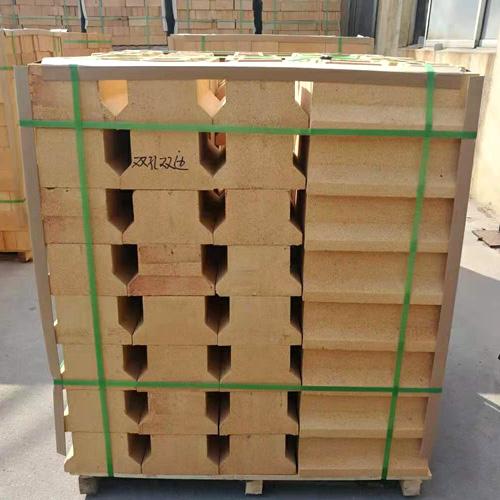
The alkali-resistant brick for cement kiln has the characteristics of strong alkali erosion resistance, good thermal shock resistance and high cost performance.
Alkali resistant bricks for cement kiln
The alkali resistant brick for cement kiln has the characteristics of strong alkali erosion resistance, good thermal shock resistance and high cost performance.
Low-alumina clay bricks with an AL2O3 content of 30-25% are made of low-alumina refractory clay as the main raw material, and are silicon-alumina refractory products with excellent alkali erosion resistance in cement kiln systems.
Yuying Refractories produces all kinds of high, medium and low grade basic refractories all year round. Among them, alkali-resistant bricks have been recognized by many domestic manufacturers. The company has a 168-meter high-temperature tunnel kiln with a daily output of 100 tons of refractory bricks.
|
Index |
normal type |
High strength |
Insulation type |
dome type |
|
Al2O3%≥ |
35 |
40 |
30 |
40 |
|
0.2Mpa softening temperature under load(T0.6)℃≥ |
1250 |
1300 |
1200 |
1250 |
|
Bulk density g/cm3≥ |
2.10 |
2.17 |
≤1.8 |
2.15 |
|
Apparent porosity %≤ |
27 |
25 |
- |
26 |
|
Normal temperature compressive strength≥ |
35 |
50 |
20 |
40 |
silicon mullite brick is a kind of refractory brick product made of super high alumina bauxite and silicon carbide as raw materials through a special sintering process. It has the characteristics of continuously forming a protective layer and reducing ring formation, and its heat resistance is also very good. The softening temperature under load can reach 1600 ℃, and the service life is long. Mainly used in the transition zone, decomposition zone and cooler of small and medium-sized cement kilns.
The unshaped refractory material used when repairing the lining of thermal equipment by spray construction method is called refractory gunning material. It is made of a refractory set with a certain particle gradation
High alumina refractory bricks are the backbone of high-temperature industrial processes. By understanding their properties, applications, and supplier selection criteria, businesses can enhance operational efficiency and reduce downtime. For industries seeking durable, cost-effective solutions, partnering with certified refractory materials suppliers in China ensures access to cutting-edge technology and reliable supply chains.
Chrome corundum brick refers to corundum refractory products containing Cr2O3. At high temperature, Cr2O3 and Al2O3 form a continuous solid solution, so the high temperature performance of chromium corundum products is better than that of pure corundum products. Chromium corundum products are widely used, and the content of Cr2O3 is mostly in the range of 9% to 15%.
Silica brick: an acidic refractory mainly composed of tridymite, cristobalite and a small amount of residual quartz and glass phases. Its silica content is more than 94%, it has anti-acid slag erosion performance, high high temperature strength, high load softening temperature, long-term use in high temperature flower wells without deformation, but low thermal shock stability (heat exchange in water is 1-4 Second-rate).
High alumina brick is one of the indispensable basic refractory materials in the upper and middle parts of blast furnace body in iron and steel industry
Yuying Refractory produces a complete set of refractories for electrolyzers, and the new impermeable bricks are used in conjunction with impermeable castables
GONGYI YUYING REFRACTORY CO.,LTD is located in GONGYI ZHENGZHOU CITY HENAN province,which is one of the main refractory production bases in China. Main products include different kinds of refractory brick and refractory material :Such as Fire Clay Brick, High Alumina Brick, Light Weight Insulating Brick,expanded clay,ceramic fiber blanket,rock wool products etc.They are widely used in Iron and steel, Nonferrous metals, BuildingMaterials(Cement,Glass,Ceramic), Petrochemical, Energy & Incineration etc industries.



